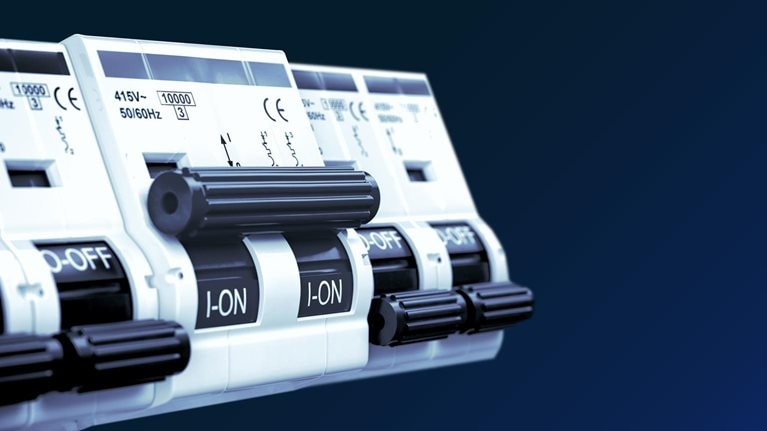This article was a collaborative effort by Wan-Lae Cheng, Cameron Davis, Andre Dua, Mike Kerlin, Jonathan Law, Neil Vakharia, Chun Ying Wang, and Ammanuel Zegeye, representing views from across the Public and Social Sector Practice.
As policy makers grapple with the humanitarian and economic impacts of COVID-19, they are using a battery of interventions to help individuals and businesses. Yet no event since World War II has caused an economic downturn of quite such scale or scope, and so leaders are deeply uncertain about what will work.
In this article, we aim to help US policy makers understand the landscape of economic interventions that other leaders have taken to overcome crises. We first highlight lessons learned during past—if less severe—crises. Then, we review compelling interventions that policy makers have implemented in the current crisis. We draw from US and global examples throughout to showcase a broad range of innovation and response. While recovery from this crisis involves both public-health and economic challenges, we focus in this article on economic actions from which policy makers can draw inspiration in their own planning.
Lessons from past crises
Three themes emerge when we look at successful government responses to previous crises, whether epidemics, environmental disasters, or financial downturns. First, they prioritize human welfare and human capital. Second, because crises tend to accelerate preexisting economic trends, the government responses that are effective often take that into account and plan long-term policy accordingly. Third, the most effective planning for longer-term economic recovery usually starts early, often alongside acute crisis-relief efforts.
Prioritize people
Recovery depends on protecting public health. It also depends on bolstering human capital, which can be done by helping individuals to retain employment or acquire the skills they need to find new jobs. For example, state workforce agencies during the Great Recession increased enrollment in government training programs by 56 percent in 2009 and then again in 2010. These programs not only offered new training on short notice, but they also established partnerships with educational institutions. The federal government later passed the Layoff Prevention Act of 2012 amid persistently high unemployment. The act provided funding and made new provisions so as to broaden opportunities for employers to offer work-sharing programs, that made it possible to continue to offer some work to employees, although with reduced hours and reduced pay. This approach to preserving jobs was grounded in research that showed that being able to stay employed is good for physical and mental health, and that unemployment—especially long-term unemployment—is associated with increases in mortality.
Understand existing trends
People who are economically vulnerable before a crisis are often most negatively affected by crises and face the toughest recovery. During the Great Recession, the bottom 10 percent of earners suffered a loss of income two-and-a-half times worse than the richest 10 percent. Sources of disadvantage can go wider than economic disparity. Hurricane Katrina brought to light new risk factors that caused disproportionate impact to some residents—for example, social exclusion, lack of English proficiency, and residence in high-density, poor-quality housing. The COVID-19 crisis has so far followed a similar trend. Research by McKinsey has found that Black Americans are five percentage points more likely to have jobs that are at risk of layoffs, furloughs, or reduced hours than are white Americans.
Crises also tend to accelerate broader market trends. The automotive industry had been experiencing challenges for years before 2008 due to increasing global competition, changing consumer tastes, and uncompetitive cost structures.1 The financial crisis heightened those challenges to the point that government intervention became required. Today, many retailers are confronting the pandemic in a weakened state after years of changing consumer behaviors and increased competition. By March 30, as the pandemic was only beginning in the United States, the rate of mall vacancies had already reached an all-time high of 9.7 percent.
With respect to workforce trends, hiring in the wake of the 2008 financial crisis shifted to higher-skilled knowledge workers, suggesting that the Great Recession accelerated trends toward automation of work.2 As governments plan for recovery from the current crisis, they could consider preparing for the further acceleration of trends such as workplace digitization and the continuing shift to online consumption.
Create adaptive, long-term solutions
Recovery from a deep crisis can be uneven, and history suggests that leaders may want to pace their policies over several years. During the Great Depression, employment grew consistently between 1933 and 1937, but then dipped five percentage points in 1938. International tourism to New York City took five years to fully recover after the 9/11 terrorist attacks. Most recently, unemployment rates doubled during the 2008 financial crisis and only recovered to prerecession levels in 2015.
Would you like to learn more about our Public Sector Practice?
Successful past responses have also anticipated a permanently changed world. The Servicemen’s Readjustment Act of 1944—known as the GI Bill—remains a prominent example of policy that was built to last. First passed in 1944, the GI Bill ushered the country and its veterans into a new peacetime order. It backed 2.4 million home loans between 1944 and 1952, and helped almost eight million veterans continue their education or professional training. Almost 80 years later, the GI Bill continues to support service members. The Department of Veterans Affairs spent $10.7 billion in 2018 to support the education of 700,000 beneficiaries. Policy makers today can similarly consider what long-term, watershed measures can be enacted to rebuild the future.
What could work for the post-COVID-19 economic recovery?
While every crisis is different, policy makers can adapt past approaches to the present situation to emerge with the talent, capabilities, and infrastructure needed for long-term resilience. The response to the current crisis evolves daily, but what we’ve learned already can begin to supplement what we know from the past.
Helping people through the crisis and into the recovery
Much of the economic response to date has focused on providing short-term relief such as maintaining employment for citizens, easing critical expenses, and providing businesses with liquidity support to prevent them from closing or filing for bankruptcy.
Some of the most common or well-known initiatives to date include the following:
- Connecting the newly unemployed quickly with talent-seeking industries: New Jersey was one of the first states to create a job portal to connect the unemployed to short-handed businesses like grocery stores and large retail.
- Tapping into help from existing institutions: Ohio is providing targeted relief to rural small businesses by giving $2 million in funding to Appalachian Growth Capital, a community-development financial institution formed in 2017 that is processing long-term, low-interest loans in 32 Appalachian counties.
- Supplementing federal relief efforts: California has established a $50 million microlending program for businesses that are ineligible for Small Business Administration loans. Similarly, Chicago enacted a $100 million small business resiliency fund to assist businesses that could not get support from the federal Paycheck Protection Program.
States have also started adjusting their taxation systems to provide additional relief. Many have, for example, extended income tax and property tax filing deadlines. They could, however, draw upon historical precedent to go further. In the wake of Hurricane Katrina, Congress passed two tax relief laws: the Katrina Emergency Tax Relief Act and the Gulf Opportunity Zone Act. These laws supported people and businesses in a “GO Zone” of 90 counties in Alabama, Louisiana, and Mississippi with measures such as tax-favored early distributions and loans from retirement accounts, removal of loss limitations to allow the entire amount of personal losses to be tax-deductible, and flexibility in tax-credit decisions. A 2016 analysis of the laws’ impact found that per capita personal income in the GO Zone grew $1,000 more each year between 2004 and 2008 than counties outside the GO Zone with similar levels of damage.3 However, it should be noted that people who are unemployed and workers in the lowest wage jobs often do not benefit from tax relief. For businesses, research has suggested that “first come, first served” tax measures have benefited the largest businesses before small and medium businesses that were in most need. 4

How to restart national economies during the coronavirus crisis
State policies today, particularly those designed to supplement federal measures and ensure equitable benefits across economic levels, can be informed by the impact and experience of post-Katrina tax relief. Supplementing tax benefits with additional direct support and making sure relief is first directed toward those in greatest need can help boost aid to disadvantaged populations and businesses.
In recent weeks, economies throughout the world have begun to reopen, and their leaders have quickly realized how important it is to restore the public’s confidence about its safety. International examples of confidence-building measures include automated temperature checking at the entrance of grocery stores in Italy, increased self-checkout and reduced cash-handling in Singapore, and plexiglass shields between tables in South Korea. As state leaders consider similar measures, they could consider the particular support that vulnerable populations need. From providing hand-washing stations and testing to people experiencing homelessness to providing adequate personal protection equipment (PPE) for lower-wage workers, governments still face a considerable challenge in protecting and building confidence across all groups.
Working preexisting trends into recovery planning
As economies restart, leaders are also considering ways to restore GDP, employment, consumption, and other aspects of aggregate demand. The labor and consumption trends that were in motion going into the crisis, as well as longer-term trends related to inclusive growth, all factor into any potential solutions.
Some early COVID-19 recovery initiatives include the following:
- Campaigns to stimulate local economies, especially by focusing on small businesses: Cities across the United States have started movements to support community businesses, including Chattanooga’s “Chattanooga To Go” delivery campaign and Philadelphia’s #Five4Fifty campaign to spend $5 at a small business each day for 50 days. States such as Maryland, New Hampshire, and Texas have further relaxed regulations to stimulate local demand (for example, by allowing restaurants to sell alcohol for delivery and takeout). As an example from outside the United States, Malaysia has issued digital vouchers for domestic tourism of up to RM100 ($23) per person.
- Funding targeted at venture-capital (VC) backed companies: Acknowledging the rise of VC funding in the past decade, JobsOhio, Ohio’s economic development organization, has announced a $50 million innovation fund to loan to Ohio-based, VC-backed businesses in the Series A+ stage. Especially in the case of VC-backed companies that are struggling to get federal funding due to affiliation rules, states can step in and ease the path to sustainable recovery.
While these interventions provide useful examples for policy makers thinking about kickstarting longer-term economic recovery, those focusing on an inclusive recovery may want to consider ensuring that systemically vulnerable businesses—such as those that are minority- and woman-owned—can recover at the same rates as other businesses. Research suggests there might be a case for a particular focus on these groups: minority business owners are less likely to be approved for capital loans than equivalent white business owners,5 while female business owners are less likely to apply for loans and tend to seek smaller loans when they do apply.6
Preparing for a transformed economy and society
The pressure on policy makers to focus on the short term is immense. However, the “next normal” is going to play out over the long term. Government leaders, particularly those at the state and local level, can consider a number of interventions that are more future-oriented:
Build and expand innovation ecosystems. Policy makers can try to help rejuvenate growth by encouraging public- and private-sector innovation via a supportive ecosystem. Local government leaders could harness the power of open innovation efforts—such as increased investment in education and R&D, challenge grants and competitions, and open networks and publicly available data and code—to attract talent to their area and promote resilient, innovation ecosystems.
New York City, for example, was able to build the second-largest tech start-up ecosystem in the United States in just one decade with a focused plan to attract tech companies and develop local talent. The tech sector in New York now accounts for over 300,000 jobs, and in 2019 New York was ranked second globally for start-up output. In another example, the Columbus, Ohio, metropolitan area has been able to leverage its advantages of being home to a large research university, Ohio State University, and the headquarters of several large retail brands to attract entrepreneurs and venture capital. Venture-capital funding in Columbus grew from $35 million in 2009 to $578 million in 2019. The city was national winner in 2016 among seven candidates for the US Department of Transportation’s Smart Cities Challenge, further increasing start-up activity to support the city’s digitally enabled transformation. Other new innovation hubs could likewise emerge out of this crisis.
Facilitate the transition to the post-pandemic economy. Policy makers could also consider investing in programs that ease the transition to the new reality. Programs that ease labor dislocation, including job matching and reskilling, will be crucial for building the workforce of the future. Existing state programs like New York’s Workforce Development Initiative and Ohio’s TechCred might be considered for scale up to create regional talent pipelines to meet demand as new types of jobs emerge. Globally, Australia has already made adjustments to its national My Skills program to meet COVID-19 crisis needs. The program supports reskilling, upskilling, and other vocational training options, and subsidizes fees. Employers that have been facing talent shortages in computer science and related fields, healthcare, and transportation can likewise launch recruiting efforts and training boot camps.
Some programs have focused on reskilling inclusively, targeting the most vulnerable populations and regions. Hawaii, for instance, launched its Reducing Unemployment Disruption & Driving Economic Regeneration program, recognizing there was a dearth of training opportunities for certain vulnerable segments of its population. It provides up to $100,000 to businesses for new employees hired after March 1, 2020 to help offset training costs and other skill-based learning.
Decisions made during past crises have played an important role not only in how well cities, states, and regions have survived, but also whether they emerged from it stronger. Will your city be known for its unparalleled business environment for small and medium-size businesses looking to digitize and expand? Can your state become a top tourist destination ? Or will workers in your locality be so successfully reskilled that it will lead the way toward inclusive growth? The answer to these questions will determine the shape of the “next normal.”


